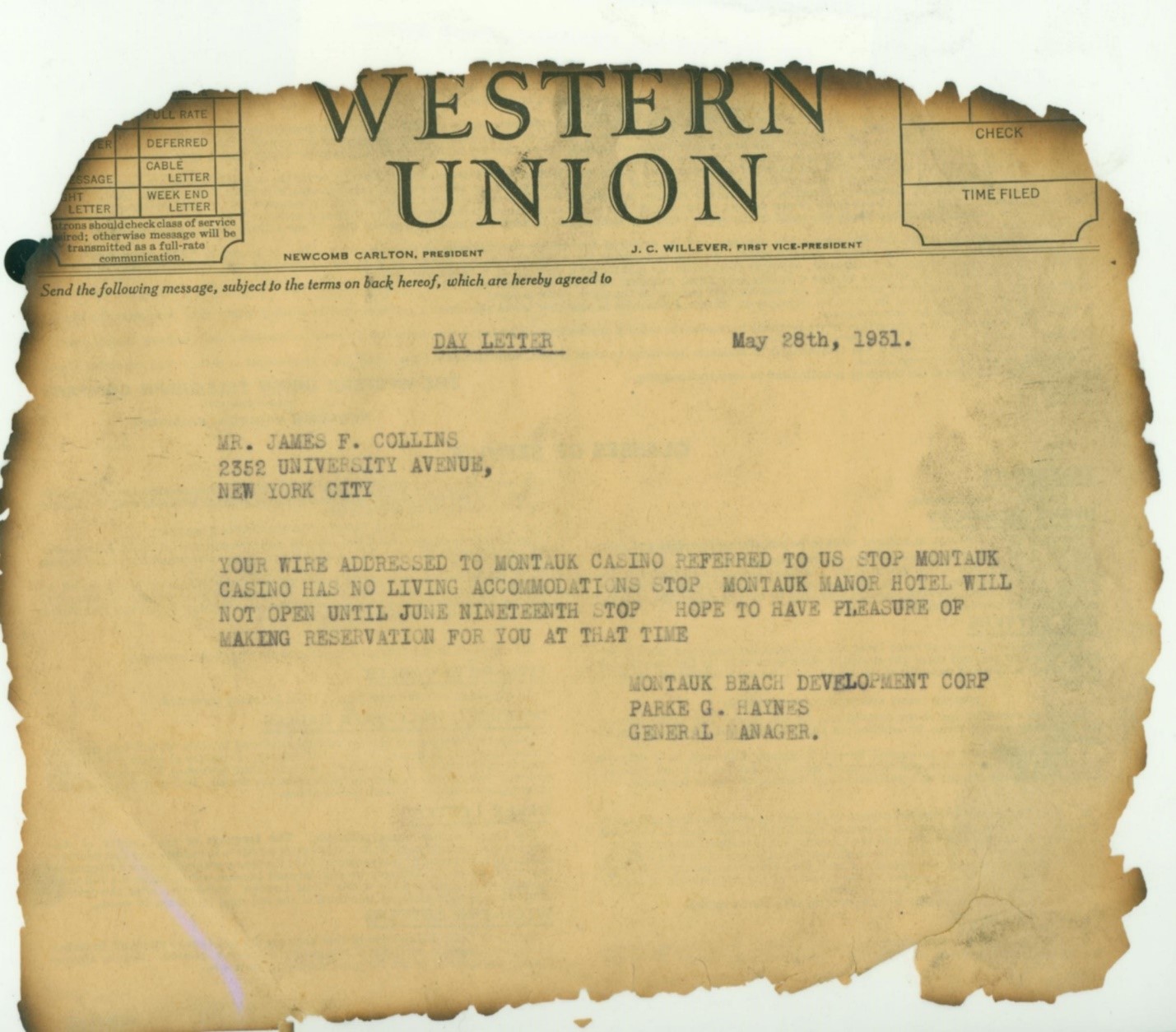
Carl Fisher’s Montauk Beach Development Corporation went into receivership in May of 1932, leaving court-appointed custodians in charge of his holdings – the Manor, the Surf Club, the Montauk Downs Golf Club, the Montauk Yacht Club, and more. The properties were valued at about $10 million: Fisher and other investors had poured some $7 million into buying 10,000 acres and starting to develop them, but he and the corporation now were “hopelessly overextended,” as one writer put it.
Before then, in Miami Beach, just as he went on to do in Montauk, Fisher had erected an impressive tower from which potential buyers could survey his real estate from above.
“An electric elevator brought guests up to the lounge at the top where one could sit by a hearth, drink ice cold beverages from a Frigidaire, and gaze out the windows to get a bird’s-eye view of the island,” wrote a blogger for Wolfsonian-FIU, a museum that traces the history and culture of Miami Beach. “It was said that he had installed a bathroom in the tower as well, so as to deprive hesitant buyers of an excuse for leaving before signing papers!”
Thanks to the end of a land boom and the 1926 hurricane in Miami, however, Fisher found limited success in Florida. He tried to diversify his holdings by developing the luxury resort in Montauk — but then came the stock market crash of 1929, and then the Great Depression.
Fisher considered a number of schemes to stay afloat: building less expensive houses in Montauk and/or installing a deepwater port; marketing the Aerocar, a lightweight touring trailer with an innovative suspension system; enlisting the help of New York Parks Commissioner Robert Moses to sell the Montauk property at a loss.
None of these efforts succeeded, however, and Fisher’s assets, which had soared to more than $50 million in the Roaring ‘20s, went on to tank to $40,000 by the time of his death in 1939.

Ironically, perhaps, it was the financial instability of the Montauk Beach Development Corporation that provided a solid argument for instituting zoning in Montauk and elsewhere in East Hampton Town.
“We speak of the future possibilities at Montauk,” an editorial in the East Hampton Star said in May of 1932. “Just suppose for a moment that the above mentioned company should be forced to auction its property.”
“Without a definite program of development of this beautiful property, Montauk’s future will be jeopardized. The Park Commission and the Montauk Beach Development Corporation did have a definite program for its development. Certain tracts of land were set aside for business purposes, others for residential property, etc., in other words a definite plan for zoning of the property.”
“Should the company lose its hold at Montauk and a public auction take place, one can imagine what might happen. With zoning restrictions swept away, real estate sharks would start their well-known sharp practices. There would be no orderly planning for this property’s future development.”
#MontaukHistory #MontaukBeachDevelopmentCorporation #TBT #ThrowbackThursday #CarlFisher #MiamiBeach

Reply or Comment